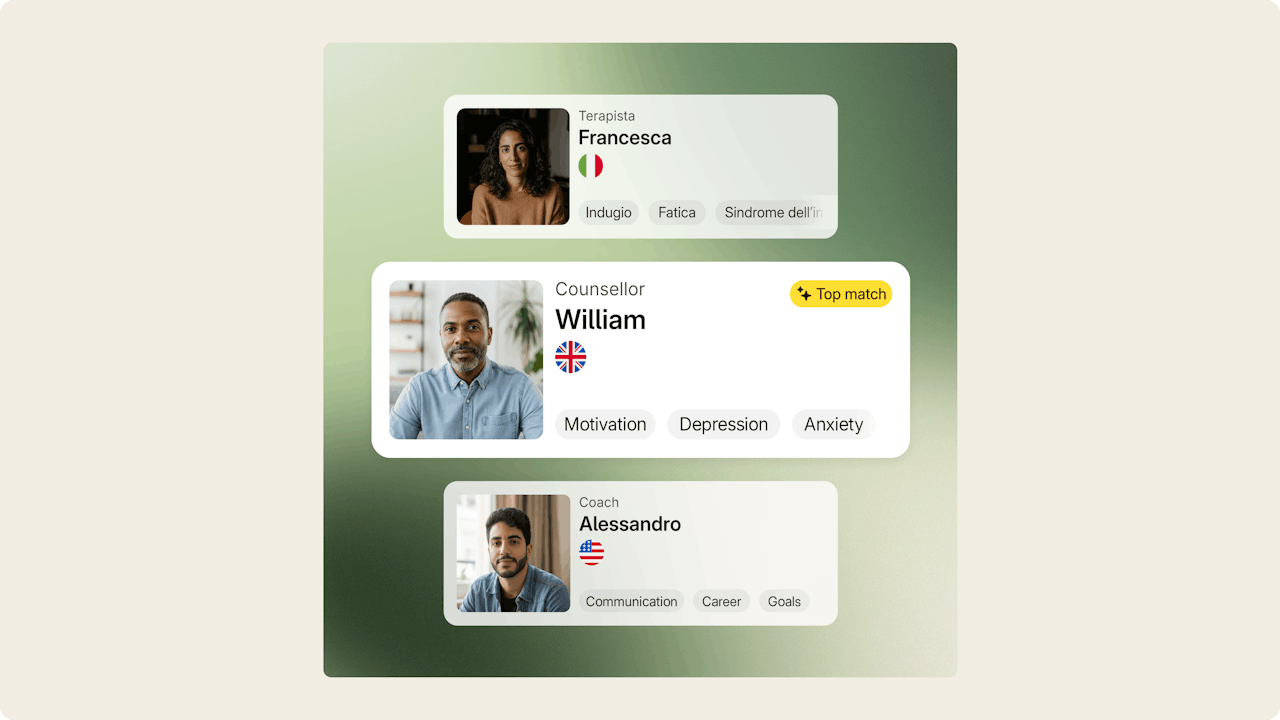Big changes at work are hard: Here's how therapy and coaching can help

Raya Moshiri
14 October 2025

Content
- Why Therapy & Coaching Are the Missing Piece
- The hidden human costs of transformation
- Where traditional models fall short
- Therapy: prevention as well as cure
- Coaching: turning shifts into growth opportunities
- Why both are needed
- The business case
Why Therapy & Coaching Are the Missing Piece
Strategy and technology matter – but it’s the human domain that ultimately determines whether transformation succeeds or fails.
Organizations today are in constant motion. New technologies, shifting market pressures, and evolving workforce expectations demand continuous reinvention. Leaders know transformation is inevitable, yet success rates remain stubbornly low.
Research shows that around 70% of large-scale transformations fail to achieve their intended outcomes (Beer & Nohria, 2000; McKinsey, 2015). The strategies themselves aren’t usually flawed. The breakdown happens when people aren’t supported – emotionally or developmentally, through the transition.
That’s where therapy and coaching can make all the difference.
The hidden human costs of transformation
Most change frameworks focus on structures and processes: new workflows, updated systems, revised roles. But employees experience transformation on a deeply personal level. Without the right support, they often struggle with:
- Emotional strain – anxiety, uncertainty, or grief as old ways of working give way to the new
- Cognitive overload – juggling new tools, processes, and expectations all at once
- Identity disruption – questioning their role, value, or place in the evolving organization
These pressures silently erode trust, drain engagement, and stall adoption. The lesson is clear: ignoring the human dimension is what derails most change efforts.
Where traditional models fall short
Change management frameworks like Kotter’s 8-Step Model or ADKAR offer useful roadmaps. They emphasize communication, alignment, and reinforcement. But they often underestimate the psychological journey.
Leaders who rely only on logical messaging and structural plans miss the heart of the transition: how people feel and grow through it.
Employees don’t simply “update” like software. They wrestle with stress, grief, and resistance. Leaders who understand and address that human reality – not just the operational one – are the ones who deliver lasting change.
This is where therapy and coaching bridge the gap.
Therapy: prevention as well as cure
Therapy gives employees a safe space to process uncertainty and navigate change. It’s not just a remedy for those who are struggling, it’s a proactive tool for building resilience. It helps people:
- Manage stress and anxiety – developing coping strategies for periods of turbulence
- Process loss and change – validating feelings when old routines, relationships, or structures end
- Maintain mental health continuity – ensuring those with pre-existing challenges aren’t destabilized further
Embedding therapy into transformation efforts sends a powerful message: wellbeing isn’t a side concern, it’s central to success.
Coaching: turning shifts into growth opportunities
If therapy builds stability, coaching fuels momentum. It helps employees and leaders step confidently into new realities by:
- Building skills – preparing individuals for new roles and responsibilities
- Shifting mindsets – reframing obstacles as opportunities for growth (Grant, 2014)
- Modeling leadership – guiding leaders to embody adaptability and empathy, setting the tone for teams
Research shows coaching not only improves goal attainment but also strengthens resilience and readiness for evolution (Fleddermann et al., 2023).
Why both are needed
Transformation isn’t one-size-fits-all. People respond differently to change — some need a reflective space to process it, others thrive with forward-looking support. That’s why offering both therapy and coaching is so effective: it meets people where they are and gives them the type of help they actually need.
Therapy helps people make sense of change, build coping strategies, and move forward with clarity. Coaching equips them to grow, develop new skills, and seize new opportunities. Together, they address the full spectrum of the human experience during transformation – emotional, psychological, and practical.
The business case
The impact of integrating therapy and coaching into transformation isn’t just visible – it’s measurable:
- Faster adoption of new systems and processes
- Reduced attrition during periods of change
- Higher engagement and trust in leadership
- A stronger, more adaptable leadership pipeline (ICF & ACMP, 2019)
In short: investing in therapy and coaching isn’t just about supporting people – it’s a direct driver of performance.
Most transformations fail not because leaders design poor strategies, but because people can lack the emotional and developmental scaffolding to carry them through.
Therapy builds stability. Coaching drives momentum. Together, they turn disruption into possibility – helping organizations not just weather change, but thrive through it.
Therapy and coaching aren’t extras. They’re the missing piece.
About the Author

Raya Moshiri, Marketing Associate
I’m Raya Moshiri, and I help organizations bring proactive mental health support to life by coordinating programs, resources, and experiences that drive engagement and real-world impact. Based in New York, I’m dedicated to making workplace wellbeing both attainable and actionable.
About the Author

Raya Moshiri, Marketing Associate
I’m Raya Moshiri, and I help organizations bring proactive mental health support to life by coordinating programs, resources, and experiences that drive engagement and real-world impact. Based in New York, I’m dedicated to making workplace wellbeing both attainable and actionable.